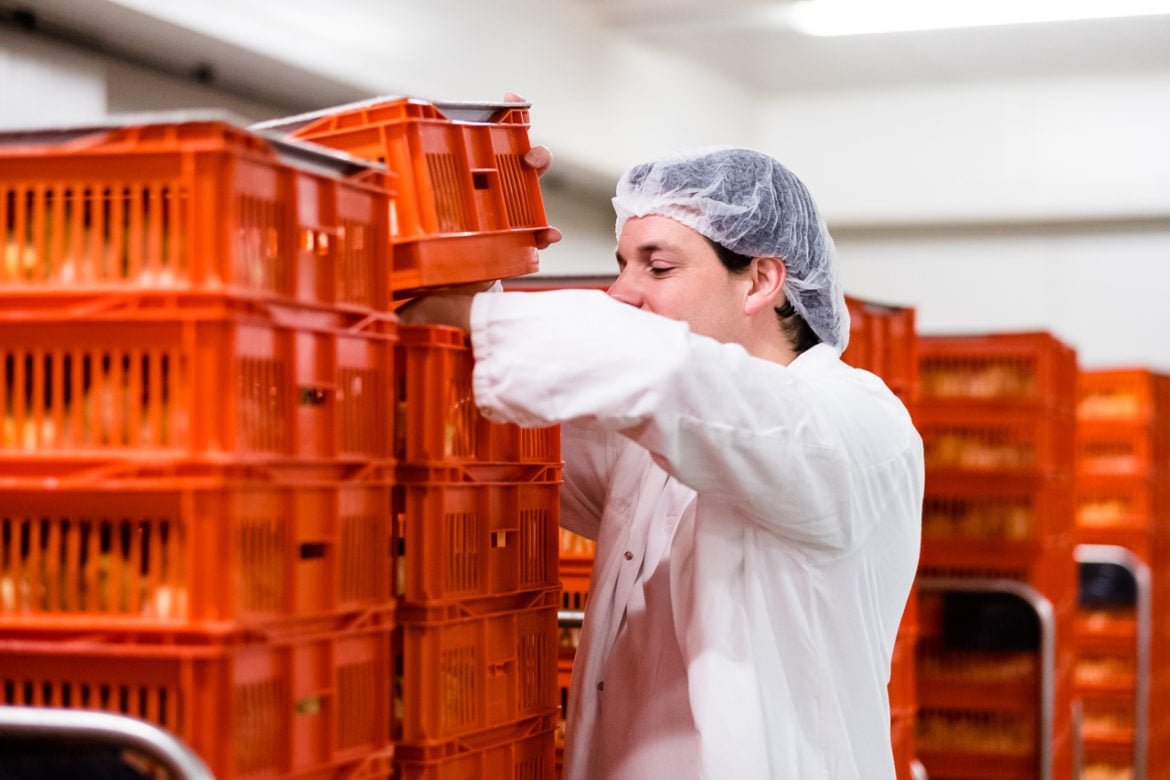
A poultry transport box or crate is the smallest logistical unit for safe poultry transportation and storage. The most common varieties to transport day-old chicks are cardboard chick boxes and plastic poultry crates. Hatching eggs can be transported by pulp trays and setter trays.
Cardboard Chick Boxes
Since they are single-use, cardboard chick boxes are more hygienic. Along with being lightweight they are ideal for air freight, for example. However they come with some disadvantages as well. They require to be assembled and they have a lower stacking level due to their limited strength. This makes them, together with their disposability, more costly in the long run. The standard size is 50 x 50 cm, varying from 40-70 cm. Cardboard chick transport boxes have a capacity of 5,000 – 9,000 chicks per meter of truck length.
Plastic Poultry Crates
Plastic poultry crates, on the other hand, are stronger and reusable. Their strength allows them to have higher stacking levels which results in a higher capacity. With plastic crates you can transport 9,000 – 17,000 chicks per meter of truck length. These plastic chicken transport crates are more cost-efficient and have a lower impact on the environment because they can be reused. Plastic poultry boxes have a height of 11-14 cm and a standard size of 40 x 60 cm, varying from 30-80 cm.
Pulp Trays for Hatching Eggs
These are used for the transportation of hatching eggs. Pulp trays have an excellent shock absorption. When packed in cardboard boxes, the cargo has a lower weight, making them perfect for air freight. Most hygiene rules ask for pulp trays to be single used. Make sure to keep them dry, as they are difficult to dry/clean and their strength reduces rapidly when wet. Pulp trays can be stacked in metal trolleys for easy handling. They have the same capacity as plastic setter trays.
Setter Trays for Hatching Eggs
Hatching egg transport can also be done in setter trays. These plastic trays are easier to clean but have a lower shock absorption. Using setter trays requires less labour when transferring eggs in the hatchery. They are reusable and can also be stacked in metal trolleys. Transport should be done in farm trolleys, since setter trolleys are not stable enough for safe road transport. With setter trays in farm trolleys you can transport 15-18,000 hatching eggs (about 1,250 kg) per meter of truck length. Placing these trays on pallets increases the capacity to 25,000 hatching eggs (about 1,800 kg) per meter.
Interested in learning more? Feel free to contact us.